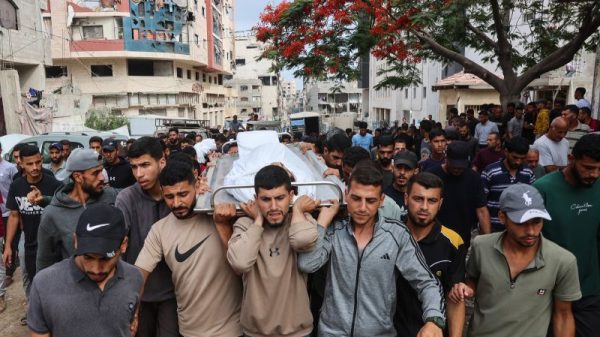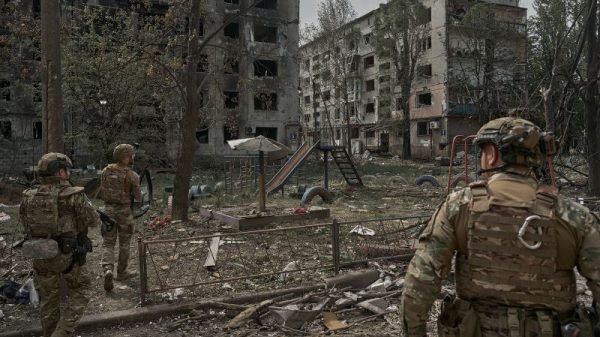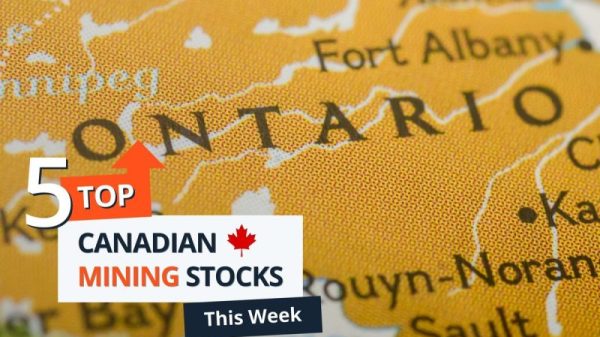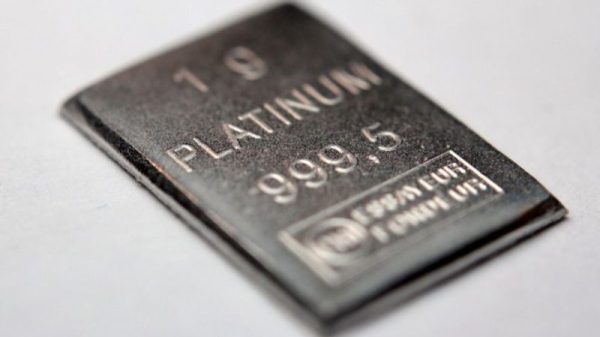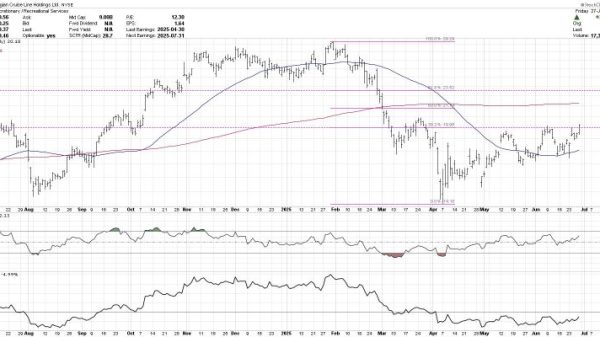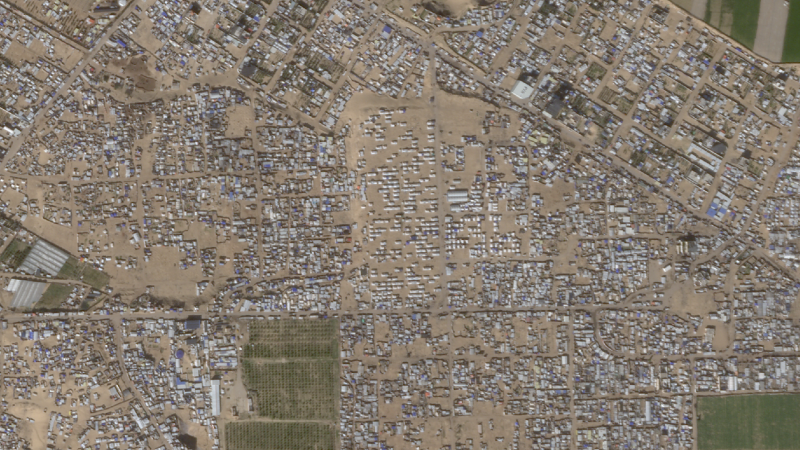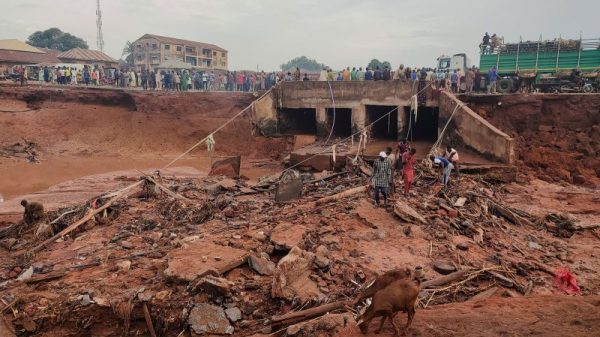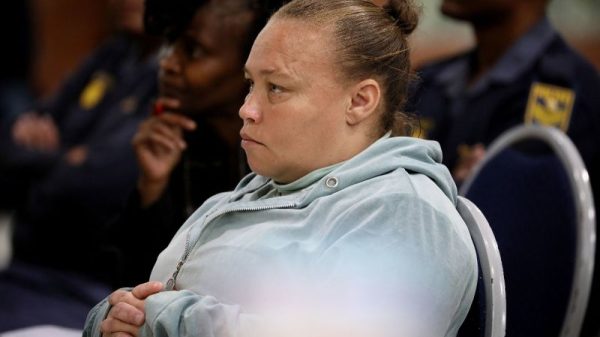
Even before Israel’s war in Gaza started, the territory was one of the most densely populated places on the planet, described by United Nations officials as an “open-air prison.” Now, Israeli forces are expanding their operations, cramming the population into an ever-shrinking patch of land.
Israel’s latest military offensive, named “Gideon’s Chariots,” aims to finally “conquer” the territory, as one government minister put it. Almost 80% of the enclave has come under evacuation orders or been designated as a militarized zone since March 18 when Israel broke its ceasefire with Hamas, according to the UN. Since then, Israel has a declared policy – backed by the US – to encourage resettlement of Gaza’s residents.
As part of the “intensified operation,” Israeli Prime Minister Benjamin Netanyahu said the whole population of Gaza – around 2 million people – will be displaced to the south of the 140 square-mile territory.
The Israeli military claims the operation is aimed at destroying Hamas and freeing hostages. Meanwhile, Israel’s far-right Finance Minister Bezalel Smotrich said the operation could lead to a complete takeover of the territory.
“We are finally going to conquer the Gaza Strip,” he said after Israel’s security cabinet approved the expanded campaign.
See what Israel’s expanding operation means on the ground, in five maps.
Around 80% of Gaza is covered by evacuation orders and Israeli-militarized zones
Some Gazans in the north say they have fled to the nearby coastline in a last-ditch effort to escape the renewed bombardment, exhausted by Israel’s 19-month assault. Others are sleeping in tents surrounded by the rubble of their former homes, fearful to leave in case they are forced out of Gaza.
Since Israel broke the ceasefire in mid-March, at least 2-3 kilometers (1.2-1.9 miles) into Gaza’s land border is a no-go zone, which includes a 1 kilometer-wide (around 0.6 miles) buffer area next to Israeli territory where homes, factories and farmland have been systematically levelled.
Access to the Mediterranean Sea to fish is all but banned. According to the UN Food and Agriculture Organization (FAO), most fishing boats have been destroyed and Palestinians fishing meters from the shore have been targeted.
Another militarized corridor was established in early April — the Israeli-demarcated “Morag Corridor” in Rafah — with the stated intention of “dividing the strip.” This is one of at least four routes established to control Gaza by the Israeli military who demolish and clear all buildings and cropland to make way for them.
At least 31 evacuation orders have been issued by Israeli forces since March 18 this year covering large areas of the strip, sometimes at the rate of two a day. As a result, an estimated 600,000 people in Gaza have been displaced in that time (this figure includes people who may have been displaced multiple times), according to the United Nations-led Site Management Cluster.
In northern Gaza, these orders have recently been accompanied by instructions to move south, despite ongoing attacks there too. This week, the Israeli military issued evacuation orders for most of southern Gaza with directives to head toward the Al-Mawasi area, ahead of what its spokesperson said would be an “unprecedented attack.”
Aid groups have criticized the use of these directives, branding them as confusing, often inaccurate and overly reliant on an internet connection which most people in Gaza only have intermittent access to. The delivery mechanism is varied, with some receiving text messages or phone calls ahead of an attack, while for others the first sign is incoming Israeli fire. On the ground, Gaza no longer looks familiar to residents, with most landmarks destroyed or damaged, including shops, trees and roads, making it much more difficult to navigate. In order to move around, people need to pass through heavily militarized checkpoints, usually on foot.
“I’ve been on the street with my children for three days, and I can’t find a place to settle,” she said. “I wish for death at any moment. I don’t know what to do with my children or where this life will take us. There is no solution.”
Since Israel launched its war in Gaza following Hamas’ deadly October 2023 attacks, Gazans have been displaced an average of six times – some up to 19 times – according to the Danish Refugee Council.
For many, repeated displacement means reliving the trauma of generations uprooted by what Palestinians call al-Nakba, or “the catastrophe,” when roughly 700,000 Palestinians fled or were expelled from their homes in historic Palestine, during the creation of Israel in 1948.
Outside of the no-go zones, most of what’s left is rubble
Most of the remaining areas that are not under evacuation orders or militarized are heavily damaged. A assessment by the CUNY Graduate Center found 60% of buildings are destroyed while the United Nations Relief and Works Agency for Palestine Refugees (UNRWA) said 92% of homes have either been damaged or destroyed. According to the UN Satellite Centre, 68% of roads are also damaged, which adds to the complications of transporting aid around the strip.
Of the agricultural land, a report published in the Journal of Science of Remote Sensing found around 80% of tree crops — such as olives and fruit trees — are likely damaged, as well as 65% of greenhouses used to grow food such as tomatoes, cucumbers, peppers and strawberries. The FAO has also reported that all cropland in Rafah, and nearly all cropland in the northern governorates are not accessible.
Al-Mawasi, where many people have been instructed to go by the Israeli military, is a narrow coastal strip in southern Gaza. Once rural farmland, by February it was the most populated area in Gaza with an estimated 116,000 people, almost 6% of the enclave’s population, displaced there, according to the UN Office for the Coordination of Humanitarian Affairs.
“I don’t know what to answer when colleagues ask me where they can go with their children in the middle of the night. We are running out of options to stay alive,” he said.
Further south, aid workers say they are overstretched, burnt out and fearful that they won’t be able to provide adequate care for a potential influx of more uprooted people.
Do people have access to the basics – food, medical care and water – in the south of the strip?
Food is scarce
Beginning on March 2, an 11-week blockade stopped all humanitarian aid from entering the strip. In the past week, some aid has entered through the southern Kerem Shalom crossing, but humanitarian agencies say food has yet to reach the over half a million people currently facing starvation across Gaza. “It remains far from enough to meet the soaring humanitarian needs,” UN spokesperson Stéphane Dujarric said.
Medical services are overwhelmed
“If military operations continue, the existing health facilities will simply not be able to cope with the numbers of displaced people,” Al Jamal said.
They are also facing an “overwhelming number of cases that require urgent, specialized medical care. Care that we can no longer provide,” Al Jamal added, while recalling how a 10-year-old boy who recently suffered head trauma in an airstrike that killed his family could not be treated as the medication he needed is no longer available in Gaza.
“If the situation remains unchanged, we do not expect to receive any medical supplies in the near future,” she said.
Water supply is facing shutdown
As well as medical aid, experts say Israel’s displacement plans will necessitate the significant restructuring of Gaza’s water supply system, much of which has already been destroyed or damaged since the war began.
In southern Gaza, the 140,000 litres of fuel needed weekly to maintain water supply operations was not received last week, leading to warnings from local officials of an imminent full-scale shutdown, the UN reported on May 21.
“The situation is especially dire in Al-Mawasi, which is not connected to the water network,” the UN said, adding that the area depends entirely on water being delivered via trucks.
International backlash
Israel’s displacement plans have received international backlash in recent weeks, with the leaders of the United Kingdom, France, and Canada threatening to take “concrete actions,” including sanctions, if Israel does not stop its latest military operations and continues to block aid from entering Gaza.
Netanyahu has vowed to push forward with the fresh offensive: “At the end of the operation all areas of the strip will be under Israeli security control,” he said last Wednesday.
Meanwhile, despite everything, some Gazans plan to resist Israel’s latest directives.



